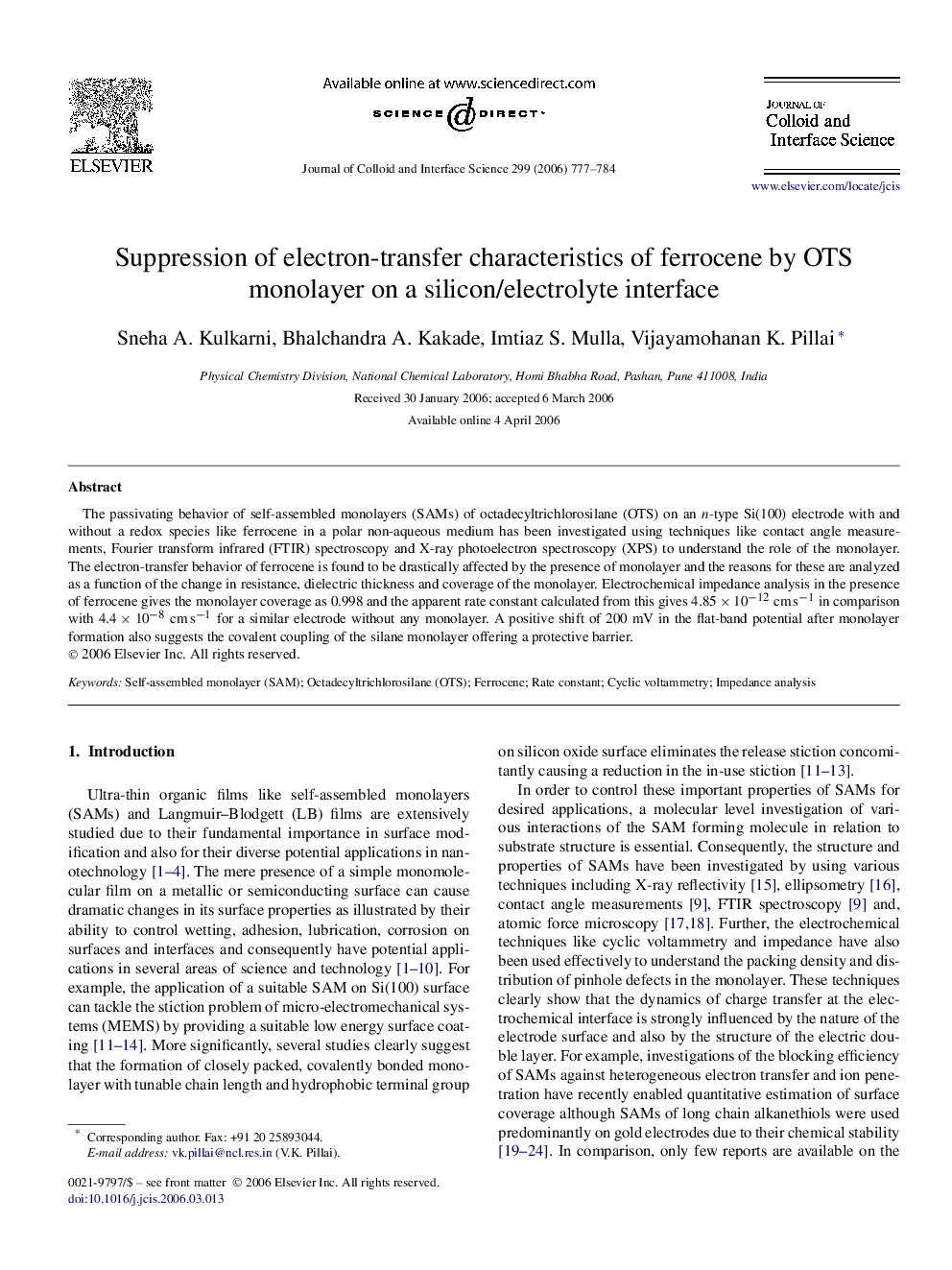| Article ID | Journal | Published Year | Pages | File Type |
|---|---|---|---|---|
| 613412 | Journal of Colloid and Interface Science | 2006 | 8 Pages |
The passivating behavior of self-assembled monolayers (SAMs) of octadecyltrichlorosilane (OTS) on an n -type Si(100) electrode with and without a redox species like ferrocene in a polar non-aqueous medium has been investigated using techniques like contact angle measurements, Fourier transform infrared (FTIR) spectroscopy and X-ray photoelectron spectroscopy (XPS) to understand the role of the monolayer. The electron-transfer behavior of ferrocene is found to be drastically affected by the presence of monolayer and the reasons for these are analyzed as a function of the change in resistance, dielectric thickness and coverage of the monolayer. Electrochemical impedance analysis in the presence of ferrocene gives the monolayer coverage as 0.998 and the apparent rate constant calculated from this gives 4.85×10−12 cms−1 in comparison with 4.4×10−8 cms−1 for a similar electrode without any monolayer. A positive shift of 200 mV in the flat-band potential after monolayer formation also suggests the covalent coupling of the silane monolayer offering a protective barrier.
Graphical abstractFigure optionsDownload full-size imageDownload as PowerPoint slide
